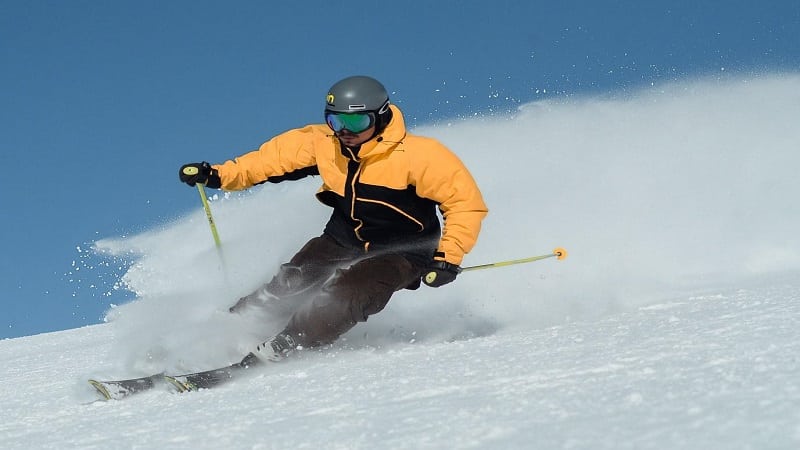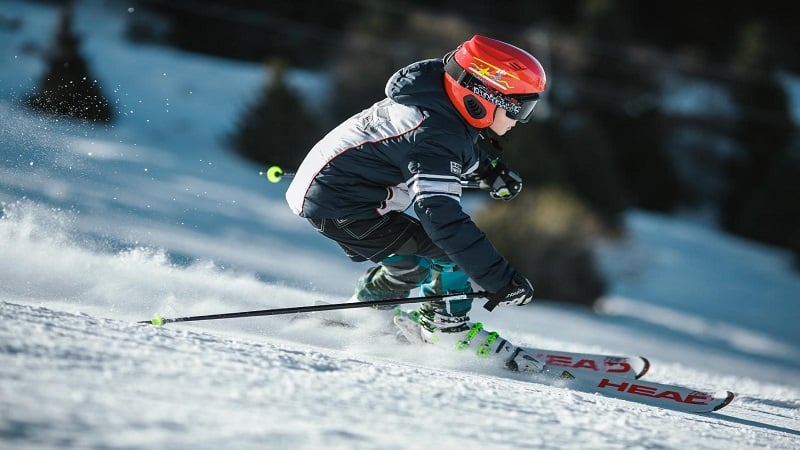Snowboarding under clear blue skies feels amazing, but the sun’s rays can sneak up on you faster than you think. Even on chilly days, UV rays reflect off the snow, making your skin vulnerable to sunburn. If you’ve ever ended a fun day on the slopes with a painful, red face, you know how important it is to protect yourself.

Luckily, avoiding sunburn while snowboarding doesn’t mean you have to miss out on the sunshine. With a few simple steps, you can enjoy your time outside without worrying about harmful UV damage. Let’s dive into easy ways to keep your skin safe and your ride comfortable all day long.
Understanding Snowboarding Sunburn
Snowboarding exposes your skin to unique sunburn risks. Knowing why you get sunburned and how UV rays affect both snow and skin helps you stay protected and enjoy every ride.
Why Snowboarders Are Prone to Sunburn
You face high sunburn risks because snow reflects up to 80% of the sun’s UV rays. This reflection hits your face and exposed skin from multiple angles. Longer hours on the slopes increase total UV exposure, especially between 10 a.m. and 2 p.m. When you’re at higher altitudes, UV intensity rises about 4% every 1,000 feet above sea level. Cold weather might mask the heat, making it easy to forget your skin needs sunscreen just like in summer.
The Effects of UV Rays on Snow and Skin
UV rays break down snow crystals, increasing reflectivity and bounce-back of harmful rays. Your skin absorbs UVA and UVB rays that penetrate deeper layers, causing redness, pain, and damage to DNA in skin cells. Repeated exposure speeds up aging and raises risks of skin cancer. Wearing gear that blocks or absorbs UV radiation limits damage, while sunscreen prevents burns and lowers long-term harm.
Essential Sun Protection Tips for Snowboarders
Staying protected from the sun lets you enjoy every run without the pain of sunburn. Use these practical tips to defend your skin while chasing powder and catching air on the slopes.
Choosing the Right Sunscreen
Pick a broad-spectrum sunscreen with at least SPF 30 to block both UVA and UVB rays. Waterproof formulas suit your sweat and snow exposure best since they won’t wash off easily. Look for options with zinc oxide or titanium dioxide—they reflect UV rays effectively. Consider a sunscreen designed for high-altitude environments, as UV intensity climbs with elevation.
Applying Sunscreen Correctly
Apply sunscreen 15 to 30 minutes before you hit the mountain to give it time to absorb. Cover all exposed areas—face, neck, ears, and even the backs of your hands. Use about one ounce (a shot glass amount) for your entire body. Reapply every two hours or immediately after sweating hard or wiping your face. Don’t forget spots around goggles, helmet edges, and under the chin.
Use of Protective Clothing and Gear
Wear UV-blocking goggles or sunglasses to shield your eyes and the delicate skin around them. A helmet with a wide brim or a neck gaiter offers extra coverage. Opt for jackets and pants with built-in UV protection when possible. Choose lightweight, moisture-wicking base layers to keep your skin dry under your gear—dry skin handles sun better. Gloves and face masks guard the skin where sunscreen might wear off quickly.
Additional Precautions to Prevent Sunburn
Taking extra steps beyond sunscreen helps keep your skin safe and comfortable while snowboarding. These measures boost your UV protection and support healthy skin during intense mountain days.
Wearing UV-Protective Sunglasses or Goggles
Choose sunglasses or goggles labeled with 100% UV protection to shield your eyes and surrounding skin. Look for lenses that block both UVA and UVB rays, as they guard against reflected sunlight off snow surfaces. Consider goggles with polarized lenses to reduce glare, improving visibility and helping you spot ice patches and obstacles more clearly. Make sure your goggles fit snugly and cover the area around your eyes to prevent light from seeping in at the sides.
Staying Hydrated and Skin Care Routine
Stay well hydrated by drinking water consistently throughout your time on the slopes. Dehydration reduces your skin’s ability to repair after UV exposure and worsens dryness caused by cold wind and sunshine. Follow a skin care routine that includes gentle cleansing and applying a moisturizer with antioxidants after snowboarding. Use lip balm with SPF to protect your lips from drying and cracking. Regularly exfoliate your skin to remove dead cells and enhance sunscreen absorption. These steps help your skin recover faster and maintain durability against sun damage during repeated outings.
Conclusion
Taking care of your skin while snowboarding doesn’t have to be complicated. With a few simple habits, you can keep sunburn at bay and enjoy every moment on the slopes. Remember that sun protection is just as important in the cold as it is on sunny summer days.
By staying mindful of UV exposure and using the right gear and skincare, you’ll protect your skin and feel comfortable all day long. Keep these tips in mind, and you’ll be ready to hit the mountain without worrying about sunburn slowing you down.










